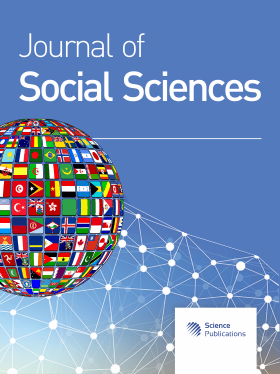Development Network Pottery to Support Strength of Community
Abstract
Problem statement: The pottery was an importance manufacture of Thai rural. The objectives of this research were to study: (1) the historical background of pottery in Central Region, (2) the network of pottery in Central Region and (3) the development of network of pottery fro developing the community business strength in Central Region. Approach: The research area included Patuntani, Nondaburi, Suanburi, Nakonpatom and Rachaburi Provinces. The samples, 90 persons, were Proposive Sampling. Qualitative Research Methodology was administered. Data were collected by Interviewing, Observation and Focus Group Discussion. For data analysis, it was classified by objective. The findings were presented in descriptive analysis. Results: Patumtani Province Pottery had a long historical evidence at Samkoke District with pattern conveying that it was Peguans’ art both of the telling and comparing to Ongsamkoke Art. Later on, there were people leading in inventing by using the other material wanted by the market. Nondaburi Province Pottery also had long historical evidence at Ko-kred, upper Peguans. So, their descendants inherited the occupation in pottery until now. For Supanburi Province, its pottery had Benjarong Pattern by obtaining knowledge from Chinese. The word “Benjarong”, was a Thai calling, referring to drawing design on pottery covering with 5 colors. In general, there would be black, white, yellow, red and green, or indigo blue. Nakonpatom Province Pottery called Siladon, was another kind of pottery with green color an striped surface. It was collected and inherited Thai Wisdom for a long period of time by experts’ tactics ancestors from generation to generation since Sukothai Period until Ayudaya Period until now. For Rachaburi Province Pottery, occurred by a Chinese Pioneer to Thailand and persuading his friends to collaborate in investing for setting up the Taosenglee Factory disseminating throughout the province. In the present, pottery in Central Region, found that in former time, it was to work alone without interaction among groups. So, it affected the production and selling. There were 7 guidelines in network development including: (1) the accept for application and selection for members participating in network project, (2) the establishment of project, management of persons who bought the items, (3) the raising in level of producing process, (4) the Web sire development, (5) the field trip study, (6) the advice of experts and (7) the project evaluation. Conclusion/Recommendations: The ethnic identity still was an indispensable thing for cultural tourism. But, the view, culture and tradition should be improved as prominent focusing on security served to the needs of tourists. So, it would be an integration for new and appropriate model in future.
DOI: https://doi.org/10.3844/jssp.2011.280.283

- 6,025 Views
- 3,803 Downloads
- 0 Citations
Download
Keywords
- Network pottery
- data analysis
- appropriate model
- community business strength
- enterprise network
- descriptive analysis
